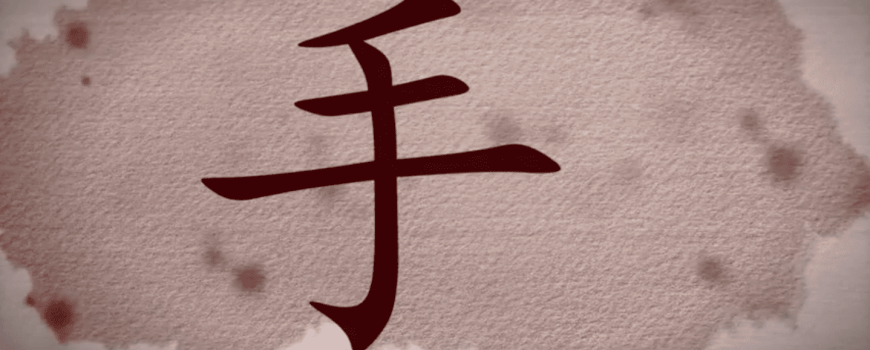Check out Episode 6 of WCC Scavenger Sunday with our glamorous hosts Allen and Nora.
Watch it on Youku here if are unable to access YouTube!
This week our lovable duo talk about the character 手 (shǒu), including some practical phrases and common uses of the character.
A: Hey everyone, I’m Allen. Welcome back to episode 6 of Scavenger Sunday!
N: 欢迎大家收看我们的节目 This week we’re talking about the character 手.
A: That’s right, 手 means hand. The horizontal lines look like fingers. There’s actually an old saying that goes “十根手指各有长短” which means “Of the 10 fingers, some are long and some are short.”
N: What does that mean?
A: The deeper meaning is that different people have different advantages and disadvantages.
N: OK, I get it…
A: Actually, every finger has it’s own special Chinese name.
N: It’s the same in English…
A: What do you mean…?
N: Tommy Thumb, Peter Pointer….
A: Not exactly the same…
N: So 手 is a good character to recognize in China for those inconvenient moments when you need to visit the 洗手间 (xǐ shǒu jiān).
A: Yeah, we’re glad we didn’t get any toilet videos last week
N: Can you teach us some useful examples of how to use the 手 character, Allen?
A: Sure, Chinese children always say: “手牵手做个好朋友。” which means “hand in hand, be a good friend.”
N: So most words associated with the hand feature the 手 character, right?
A: Yep, for example 手臂 (shǒu bì) means arm and 手表 (shǒu biǎo) means watch.
N: Speaking of my watch, I think its time to watch those 手 videos from you guys.
A: Well done everyone
N: Looks like people have been practicing their writing skills!
A: So, let’s look at next week’s character.
N: Yeah, this week’s character is 花 (huā).
A: 花 means flower, so we expect some artistic pictures for this one!
N: Allen, can you show us to write the character 花 please?
A: Yeah sure, lets go to the board…
[Allen demos 花 character]
A: 花 has two parts; the first part is the radical at the top 草字头 (cǎo zì tóu) which is used with many plant characters. The second part is 化 (huà) at the bottom which is the phonetic part for this character. 化学 (huà xué) in Chinese means chemistry. So next time you know what you need to give to your girlfriend for Valentine’s day: it’s a plant and chemistry! Hope you like it!
N: Thanks Allen.
A: You’re welcome.
N: Hey, by the way, if you want to practice your 花 reading skills you can find a free story on our Dictionary app called ‘A Small Smiling Flower’. It has Pinyin and English translations as well as the Mandarin audio files so you can listen to you while you read along with the book.
A: Thanks everyone for sending us your pictures, we expect lots more next week.
N: You can find our apps at www.writtenchinese.com/apps Thanks for joining us! 谢谢了!下次见!
A: 下次见! bye!
